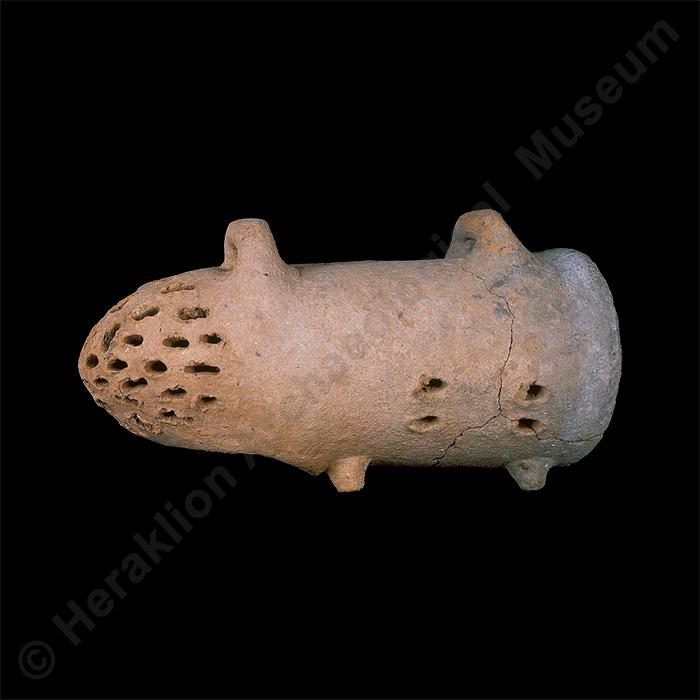Beekeeping utensil (smoker)
Π2113
Clay
Intact, mended.
Maximum length: 34.5 cm. Maximum width: 14 cm. Maximum height: 18.5 cm.
Zakros
House Ι - House XIV
Late Bronze Age. Neopalatial period, Late Minoan IB period.:
1500-1450 BC:
Gallery:
VICase:
54Exhibition thematic unit:
Late Bronze Age - Neopalatial period (1700-1450 BC). Private and public life. Bread and circusesHome handicrafts. Crafts
Description
Coarse clay cylindrical vessel tapering to a rounded end, with a large opening in the underside. It has slots in the side walls, two arched handles on the top and four feet on the bottom, as well as burn marks. It was probably a bee smoker for collecting honey. Some sort of combustible material was placed inside through the large opening under the nose and set alight, producing smoke. The smoke emerged from the pierced nose, while the side slots drew in air to keep the material burning. The shape of the putative bee smoker indicates that it may have been used with horizontal tubular beehives, although the possibility that it was used with upright barrel-shaped hives cannot be excluded.Bibliography:
Hogarth, D.G., "Excavations at Zakro, Crete", The Annual of the British School at Athens 7 (1900-1901): 121-149. Athanasaki, K., "Beekeeping Vessel (Smoker)". In Μ. Andreadaki-Vlazaki, G. Rethemiotakis and N. Dimopoulou-Rethemiotaki (eds), From the Land of the Labyrinth: Minoan Crete, 3000-1100 B.C. Volume 1. New York, 2008: 117. Tyree, L., H. Lewis Robinson and P. Stamataki, “Minoan bee smokers: an experimental approach”. In E. Mantzourani and Ph. P. Betancourt (eds), PHILISTOR: Studies in Honor of Costis Davaras. Philadelphia, 2012: 223-232.Author:
P. S.Photographs' metadata
